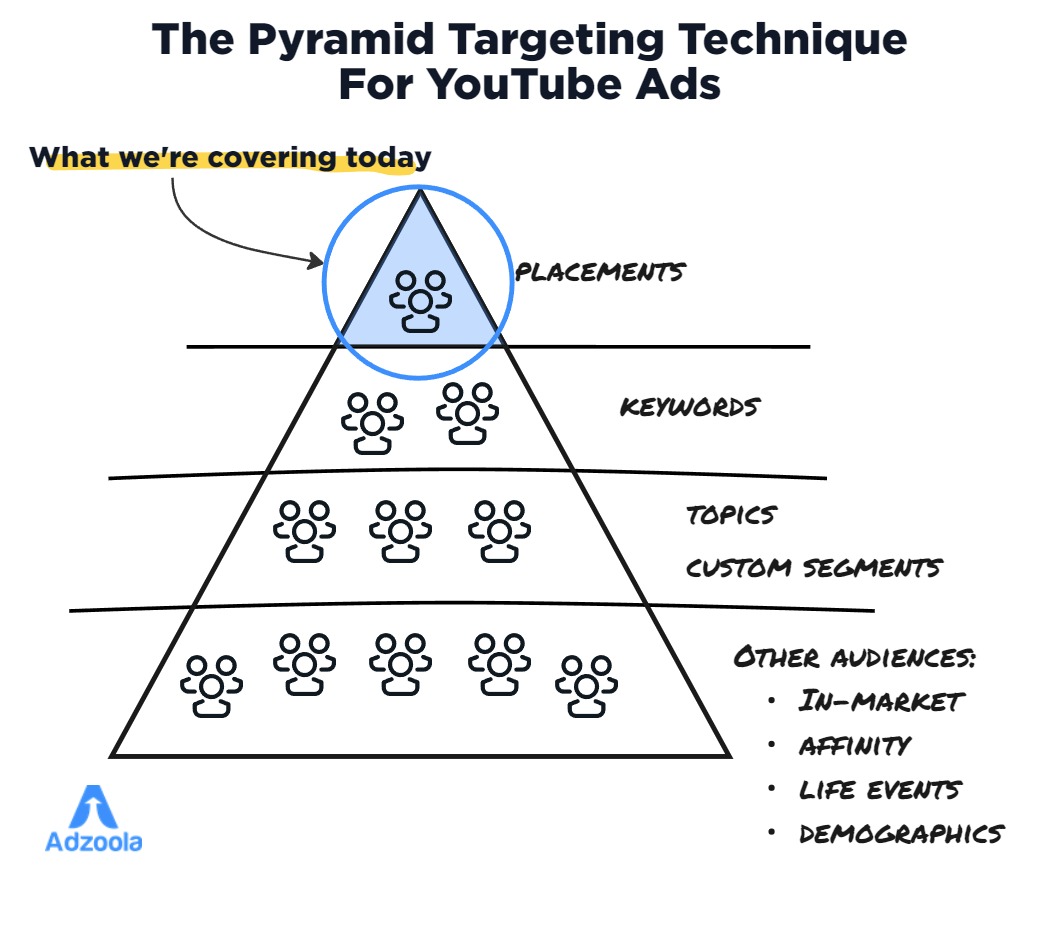Whether it’s your favorite TV ad from when you were younger or a song that transports you back to something you saw in the ad breaks, there’s no denying the lasting impact that video advertising has had over the last 80 years. But why YouTube advertising?
Is video advertising a must-have for advertisers in 2024? How can we, as PPC heroes, make sure we’re getting it right for our clients? Let’s explore.
Table of Contents
How has video advertising evolved?
Video advertising opportunities used to only be available to a handful of large-scale brands via certain studios, production companies, and publishers. Now all brands, and lone creators of all shapes, sizes, and budget can create effective video advertising content from home. All they need is a smartphone and some basic editing software.
Not only has creating video content become far more accessible but access to publishers has grown substantially too. Today, not only do publishers distribute content for free, but they also financially incentivize the creation of great content. Over the last 20 years, it’s safe to say that the tables have turned on the creator-publisher relationship. The two outcomes of this are the ‘creator boom’ – a whole new economy allowing content creators to earn money from their creations – and a shift in the content types with which consumers are inclined to engage. Old-school platforms such as Facebook have shifted their algorithms and product offerings to better facilitate video and video distribution. Newer platforms such as TikTok have soared to near-overnight mainstream popularity by focusing on nothing but video content.
The most recent evolution of video advertising has come with the Connected TV trend, stemming from internet-connected TV consumption. The rise in demand for streaming, on-demand content, and YouTube is projected to continue to grow globally, reaching user-base heights of approximately 1.6 billion worldwide by 2027.
These trends aren’t expected to slow down anytime soon. The number of U.S. Connected TV users is expected to exceed 62.5 million by 2025, from 57 million in 2020. Broadcast and cable networks are feeling the pinch too, with 90% of networks reporting audience declines over the last five years.
With this in mind, how can advertisers shift their focus toward video content without relying on traditional distribution? I believe the answer is YouTube advertising.
Why YouTube advertising?
YouTube is at the epicenter of both the creator and distribution sides of the video boom. YouTube Connected TV counts for over 50% of ad-supported streaming watch time for adults in the U.S., making it one of the top destinations for advertisers.
User trust is also a strong factor in YouTube’s success. Almost 90% of YouTube users believe YouTube creators give recommendations that they can trust, and 83% of YouTube users state that they feel they get the highest quality information about products from YouTube, too. YouTube is an undeniable contributor to the customer purchase journey, particularly when users are in the research and consideration phases of the funnel. But don’t be misled into thinking YouTube is for ‘awareness only’ – YouTube drives conversions such as lead generation and sales, too. Especially with its Video For Action campaign type.
Outside of user trust and loyalty metrics, advertising on YouTube has myriad perks and benefits for advertisers, including:
Full-funnel activity with custom goals. Advertisers are able to generate brand awareness as well as drive consideration and conversions via video advertising
The ability to meet users where they are across multiple devices – both on the go and in their homes
A growing number of brand safety measures such as placement and topic exclusions to prevent ads from appearing on unsafe or inappropriate content
Robust goal, key event, and conversion tracking solutions throughout the funnel
The opportunity to expand video advertising efforts to YouTube partners and Google TV placements
Near real-time reporting on not only key metrics such as user engagement, view rates, and video view times but also deeply detailed audience insights, as a result of ownership by Google
Thorough audience targeting options based on demographics, user interests, user behaviors, location, and plenty of other highly-targeted options
A broad range of ad types to support your goals: both on a reservation basis and through traditional CPM (cost per thousand impressions) or PPC (pay-per-click) routes
Management and reporting via Google Ads.
One of the perks of YouTube advertising is there’s no minimum ad spend – something that may have previously given advertisers pause in investing in video advertising. YouTube is an accessible place to advertise for brands of all shapes, sizes, and (most) industries!
YouTube Advertising best practices
Once you’ve decided to advertise on YouTube, you’ll want to give it your best shot by following the below ad copy and creative best practices to make your ads as impactful and successful as possible.
YouTube creative best practices
Let’s start with the fun part: creative best practice. YouTube is a very supportive company when it comes to creators and advertiser guidelines. They’ve put together the “ABCDs of effective creative” which are relevant to all advertisers.
Attention: Hook and sustain attention with an immersive story (by jumping into the action)
Branding: Brand early, often, and richly (via colors, audio, and visuals)
Connection: Help people think or feel something (by humanizing the story)
Direction: Ask people to take action (by including clear CTAs).
As well as YouTube’s own creative guidelines, here are some other tips I’ve picked up!
Try to keep your ad length below 45 seconds. Video view rates tend to dip dramatically after this point
If you decide to run skippable ads – generally used when driving brand awareness and consideration – it’s crucial that the first 5 seconds of your video are engaging, lively, and informative.
YouTube’s own guidance also states to “frame tightly and pace quickly” to make your ad as engaging as possible for users, whether they’re on laptops, Connected TV or mobile devices
Create ads with ‘sound on’ in mind, as YouTube users rarely have ‘sound off’
Try to include humans, not just product shots, to humanize your brand’s story.
YouTube ad copy guidelines
When you think about video advertising, you may not think about the accompanying copy. As with Responsive Search Ads, YouTube uses a combination of headlines, descriptions, and CTAs to encourage users to take your desired action. While the creative is absolutely the most important factor to grab attention, copy can ultimately be the difference between driving user action and not.
In order not to treat ad copy as an afterthought, create the below content ahead of time. To supplement each video ad, you’ll need:
Between 1-5 30-character Headlines
Between 1-5 CTAs from a pre-defined list (including ‘Learn more’, ‘Download’, ‘Start now’, ‘Sign up’, and ‘Apply now’)
Up to 5 90-character Long Headlines
Between 1-5 90-character Descriptions.
It’s important to make sure that your long headlines, headlines, and descriptions are unique – as you won’t be able to define when and how they appear. In some cases, headlines and long headlines may appear in the same ad. Similarly, long headlines and descriptions may appear at the same time. Or, only a long headline will appear without additional context. In short, make sure that each of your ad copy assets can stand on its own and with potential counterparts.
YouTube ad dimensions
This one is easy, right? YouTube = horizontal ads. Not anymore! With the rollout of Shorts and YouTube continuing to test a variety of placement sizes for all user devices, advertisers are encouraged to use three ad dimensions in video advertising to maximize reach.
For YouTube placements, the ideal dimensions are as follows:
For HD (1080p) videos:
1920 x 1080 px (for horizontal placements)
1080 x 1920 px (for vertical and Shorts placements)
1080 x 1080 px (for square placements)
For SD (720p) videos:
A minimum of 1280 x 720 px (for horizontal placements)
A minimum of 480 x 640 px (for vertical placements).
Summary
Video advertising via YouTube should be a fundamental part of your marketing strategy in 2024 and beyond. The ability to meet potential customers where they’re at, the cost-effective reach, and the full-funnel marketing abilities of YouTube make it a must-have element of the media mix for modern advertisers.
The post Why YouTube Advertising is Essential to Your Marketing Mix first appeared on PPC Hero.





Leave a Reply